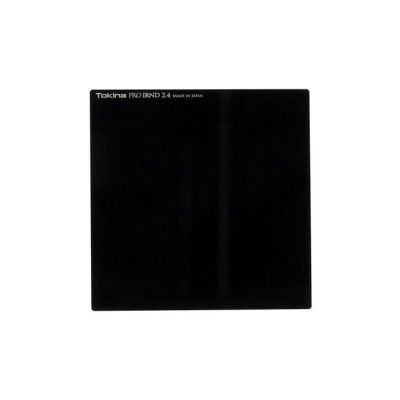Tokina 4 x 4'' Cinema PRO IRND 2.4 Filter (8 Stop)
Tokina 4 x 4'' Cinema PRO IRND 2.4 Filter (8 Stop)
Tokina’s Newly Developed Accu-ND Technology Redefining the Combination of IR and ND Filtering
Most of today’s high-end cinema cameras do not come equipped with a built-in low-pass or IR cut filter since they try to mimic the human eye and receive as much data as possible from the image subject.
The more sensitive cameras are to light, however, the more exposure needs to be maintained using a stronger ND filter which in turn creates infrared pollution. To alleviate this issue, many camera
In addition to this, after adding or replacing an IRND filter, the white balance needs to be adjusted to maintain true color fidelity, which can quickly become too much work. In the end, the benefit of cutting infrared pollution doesn’t seem like much of a benefit considering the need to continually white balance during a shoot and then correct color shifts in post.
Crafted to Precision for the Art of Cinematography
In terms of the development team at Kenko Tokina with their innovative Accu-ND Technology, creating a Neutral Density filter that precisely controls the amount of light entering the lens without affecting the color. A revolutionary filter that stabilizes the transmittance of color throughout the visible spectrum.
The Tokina PRO IRND filter is available in 2 styles, round and square/rectangular.
The round PRO IRND filter has an ND vapor deposition coating on both sides of the glass creating a high precision, truly neutral filter. The square/rectangular type of filter has an ND vapor deposition coating sandwiched between two layers of glass so the filter can be re-polished again and again should it get scratched, extending the life of the filter.
There are generally two types of IRND filter manufacturing processes currently in the market today. One type cuts the near infrared from a particular wavelength and the other controls rather than cuts the infrared up to1200nm. The Tokina PRO IRND filter is of the latter category, using suppression rather than cutting to eliminate infrared pollution. Even though both methods can be equally effective, the former type of cutting is often prone to producing unwanted color shifts.
PRO IRND 4x4”
Density : 2.4
• Metallic ACCU-ND Coating
• Professional-Grade Optical Glass
